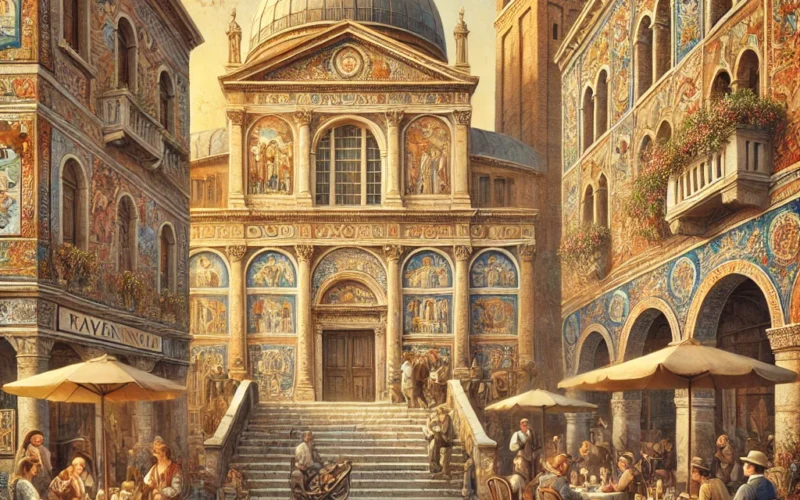Ravennati, a term associated with the people and cultural heritage of Ravenna, Italy, reflects the city’s rich history, architectural marvels, and vibrant traditions. Known for its breathtaking mosaics and fascinating past, Ravenna is a unique place that offers much more than meets the eye. In this article, we will explore what it means to be Ravennati, from the city’s historical significance to its modern-day culture, cuisine, and festivities.
The Historical Essence of Ravennati
Ravenna, once the capital of the Western Roman Empire, is famous for its ancient architecture and cultural significance. The influence of different rulers, including the Byzantines, has left a lasting impression on the lifestyle and traditions of the Ravennati people. With eight UNESCO World Heritage Sites, including early Christian basilicas and intricate mosaics, Ravenna holds a special place in the hearts of both locals and visitors.
To understand the true meaning of Ravennati, it’s essential to delve into the history of this magnificent city. Each piece of mosaic art and each preserved structure tells the story of a people deeply connected to their past, maintaining an unbroken bond with their heritage.
What It Means to Be Ravennati Today
The term Ravennati not only refers to the residents of Ravenna but also embodies a lifestyle filled with art, culture, and community spirit. The people of Ravenna take pride in their artistic legacy, participating actively in cultural preservation and modern innovations.
Being Ravennati means more than living in a city; it’s about embracing a way of life rooted in tradition and connected to a rich cultural landscape. Whether it’s supporting local artisans, attending festive events, or preserving historical landmarks, the Ravennati way of life is a blend of the old and the new.
Art, Mosaics, and Architecture: The Soul of Ravennati Heritage
The heart of Ravennati culture lies in its world-renowned mosaics. These intricate artworks, dating back to the Byzantine era, can be found in monuments such as the Basilica of San Vitale and the Mausoleum of Galla Placidia. The mosaics represent not only religious themes but also the artistic spirit that flows through the veins of the Ravennati people.
Architecture plays a significant role in shaping the identity of Ravennati. The fusion of Roman, Gothic, and Byzantine styles in Ravenna’s structures reflects the city’s historical transitions, making it a living museum of architectural evolution.
Ravennati Cuisine: A Blend of Tradition and Taste
Like its art and architecture, the culinary traditions of the Ravennati people are deeply rooted in history. Traditional dishes like piadina, a thin flatbread filled with cheese, meats, or vegetables, showcase the simplicity and flavor of the region. Seafood, fresh from the Adriatic Sea, is another highlight of Ravennati cuisine, with dishes such as brodetto (a flavorful fish stew) standing out as local favorites.
The people of Ravenna also enjoy the region’s renowned wines, such as Sangiovese, which pair perfectly with the traditional meals. These culinary delights offer a taste of the Ravennati lifestyle, combining simple ingredients with centuries-old cooking techniques.
Celebrations and Festivals: Living the Ravennati Spirit
Festivals and community celebrations are an essential part of life in Ravenna. Events like the Ravenna Festival bring together music, theater, and dance, reflecting the artistic essence of the Ravennati people. The festival attracts international artists and visitors, reinforcing Ravenna’s reputation as a cultural hub.
Another key event is the Feast of Saint Apollinaris, the city’s patron saint. The celebration includes religious processions, traditional food, and community gatherings, embodying the spirit of unity and faith among the Ravennati people.
Modern-Day Ravennati: Preserving Tradition in a Changing World
Despite the influence of modernization, the Ravennati have maintained their cultural roots. The people of Ravenna continue to balance the preservation of historical traditions with embracing contemporary changes. This harmony between past and present is a defining feature of the Ravennati lifestyle.
Local initiatives aimed at conserving heritage sites and promoting sustainable tourism show the dedication of the Ravennati to their city. Residents are actively involved in maintaining the cultural integrity of Ravenna while welcoming visitors from around the world to experience their way of life.
Conclusion: Embracing the Ravennati Way
In summary, being Ravennati means living in harmony with history, culture, and tradition while embracing the opportunities of the modern world. From art and architecture to cuisine and festivals, the spirit of the Ravennati people shines through in every aspect of life in Ravenna.
Visitors to this beautiful city can not only admire its mosaics and historical landmarks but also experience the warmth and hospitality of its people. Embracing the Ravennati way means understanding the importance of community, art, and heritage in shaping a meaningful life. Whether through savoring traditional dishes or attending vibrant festivals, the essence of Ravennati is something that resonates deeply with those who visit Ravenna and those who call it home.

